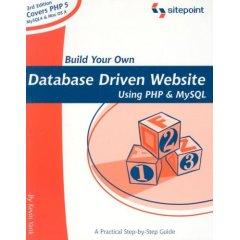| 2020ok Directory of FREE Online Books and FREE eBooks |
Free eBooks > Computers & Internet > Programming > Introductory & Beginning > General > Build Your Own Database Driven Website Using PHP MySQL
Build Your Own Database Driven Website Using PHP MySQLby Kevin Yank  Download Book If you are the author or the publisher, and would like to link to your site here, please contact us. About Book net Magazine (UK) "... in-depth title, with specific coding examples... certainly useful if you're trying to add database functionality to your site." .net Magazine (UK) "... in-depth title, with specific coding examples... certainly useful if you're trying to add database functionality to your site." Erik Hey "Your book is wonderful, I've learned more than using books twice or three times the size." Daniel Jajeh "Kevin, you have an unmistakable gift for helping people to understand the complexities of programming..." Erik Hey "Your book is wonderful, I've learned more than using books twice or three times the size." Book Description Build Your Own Database-Driven Website Using PHP & MySQL is a practical guide for first-time users of PHP & MySQL that teaches readers by creating a fully working Content Management System, Shopping Cart and other real-world applications. There has been a marked increase in the adoption of PHP, most notably in the beginning to intermediate levels. PHP now boasts over 30% of the server side scripting market (Source: php.weblogs.com). The previous edition sold over 17,000 copies exclusively through Sitepoint.com alone. With the release of PHP 5, SitePoint have updated this bestseller to reflect best practice web development using PHP 5 and MySQL 4. The 3rd Edition includes more code examples and also a new bonus chapter on structured PHP Programming which introduces techniques for organizing real world PHP applications to avoid code duplication and ensure code is manageable and maintainable. The chapter introduces features like include files, user-defined function libraries and constants, which are combined to produce a fully functional access control system suitable for use on any PHP Website. About the Author Kevin Yank is the Technical Content Director for SitePoint.com, author of many well received tutorials and articles, and editor of the SitePoint Tech Times, an extremely popular technically-oriented email newsletter for Web Developers. Before graduating from McGill University in Montreal with a Bachelor of Computer Engineering, Kevin was not only a budding Web Developer himself, but also an active advisor for the Sausage Software Web Development Forums and writer of several practical guides on advanced HTML and JavaScript.
The problem is that, more often than not, the people who provide the content for a site are not the same people who handle its design. Oftentimes, the content provider doesn't even know HTML. How, then, is the content to get from the provider onto the Web site? Not every company can afford to staff a full-time Webmaster, and most Webmasters have better things to do than copying Word files into HTML templates anyway. Maintenance of a content-driven site can be a real pain, too. Many sites (perhaps yours?) feel locked into a dry, outdated design because rewriting those hundreds of HTML files to reflect a new design would take forever. Server-side includes (SSI's) can help alleviate the burden a little, but you still end up with hundreds of files that need to be maintained should you wish to make a fundamental change to your site. The solution to these headaches is database-driven site design. By achieving complete separation between your site's design and the content you want to present, you can work with each without disturbing the other. Instead of writing an HTML file for every page of your site, you only need to write a page for each kind of information you want to be able to present. Instead of endlessly pasting new content into your tired page layouts, create a simple content management system that allows the writers to post new content themselves without a lick of HTML! Related Free eBooks
| Related Tags |












SEND A COMMENT
PLEASE READ: All comments must be approved before appearing in the thread; time and space constraints prevent all comments from appearing. We will only approve comments that are directly related to the article, use appropriate language and are not attacking the comments of others.